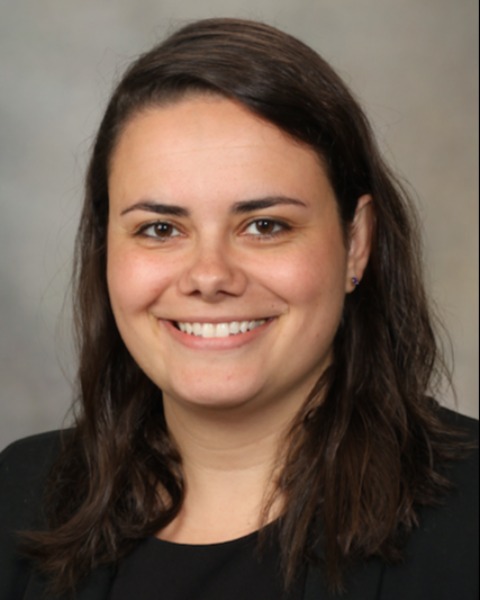Medical Education: Resident
Medical Education 14: Resident 5
494 - Improving readiness for the assessment of neonatal respiratory distress in pediatric interns: the development of a virtual learning module
Monday, May 1, 2023
9:30 AM - 11:30 AM ET
Poster Number: 494
Publication Number: 494.422
Publication Number: 494.422
Rebecca Clayman, Tufts Children's Hospital, Brookline, MA, United States; Charles D. Hannum, Tufts University School of Medicine, Boston, MA, United States

Rebecca Clayman, MD (she/her/hers)
Chief Resident
Tufts Children's Hospital
Brookline, Massachusetts, United States
Presenting Author(s)
Background: Pediatric residents are required to rotate in well baby nurseries and in neonatal intensive care units. As first year pediatric residents (PL1) at Tufts Children’s Hospital (TCH), they are expected to be the primary responder to urgent neonatal concerns. The need for preparation has been addressed through early clinical exposure or as part of a pediatric boot camp. Due to restrictions during the COVID-19 pandemic, virtual learning became the primary method of teaching. Recent studies have shown the effectiveness of boot camps in improving confidence, knowledge and milestone based subcompetencies, although results are challenging to generalize. Spaced learning has been shown to improve retention, although the ideal exposure time has not been well defined.
Objective: Our primary aim was to develop an interactive case-based online module that teaches PL1 residents how to assess and manage neonatal respiratory distress. Our secondary aim was to assess PL1 resident knowledge and confidence in responding to neonatal respiratory distress concerns using spaced learning.
Design/Methods: We developed an interactive case-based online module involving the evaluation of a neonate in the newborn nursery with respiratory distress. PL1 residents at TCH in 2021-2022 were eligible to participate and randomized to complete the same modules two to four times over a 12 week interval. Data on knowledge and confidence was collected with each completion of the module and the module was evaluated after completion.
Results: Eleven (out of 13 eligible) PL1 residents completed the module at least once. In the cohort with the largest number of participants, confidence in interpreting vital signs improved from 86.5% to 100% over the course of 12 weeks. Confidence in formulating a differential diagnosis improved from 42.5% to a 80% after 12 weeks. Confidence in assessment and plan improved from 30% to 72% after 12 weeks. From the evaluation of the module, participants commented on the unique way to learn about the assessment of respiratory distress and found the virtual format convenient and timely.
Conclusion(s): We were able to create a module evaluating neonatal respiratory distress that PL1 residents found to be easy to use and engaging. Our small sample size significantly limits the conclusions we can draw. As the module is virtual and can be shared, it has the potential to be used by learners at many institutions. Future directions include implementing the module as part of a pre-graduation boot camp at the end of the M4 year and repeating it immediately prior to intern year to further investigate spaced learning.
